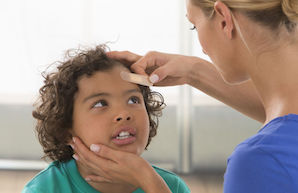Falls and blows to the head in childhood can look scary, as the many blood vessels in the scalp can cause copious bleeding, but they’re usually superficial. It’s those that cause largely unseen internal injury that are dangerous, as they can result in bleeding and swelling of the brain, with severe long-term effects – including physical disability and personality changes, note therapists at Headway Natal, a non-profit rehabilitation centre for brain injury survivors.
There is no official registry for traumatic head injury statistics in South Africa. But according to the National Institute for Occupational Health, 89 000 cases of new traumatic injury are reported each year, half caused by motor vehicle, bicycle or vehicle-pedestrian accidents, a quarter by falls, 20% by violence, and the rest by accidents during sporting and other activities.
Take sensible steps to help keep child safe.
1. Childproof your home. Make sure you have approved gates and railings to prevent falls down steps, and bars on cots and windows. Secure loose rugs and electrical cords, and make sure toys are put away after play so no one trips.
2. Insist that they always wear approved, well-fitting protective headgear when riding tricycles, bicycles, quad bikes or horses, or while rollerblading, inline skating, skateboarding or playing contact sports, especially rugby, cricket, hockey and wrestling. Remember to replace gear when they outgrow it or it gets damaged.
3. Fit your car with an approved child seat in the back, then a booster seat, and when they progress to seat belts, never start the car until they have buckled up – it needs to become a habit. Set an example by always wearing your own seatbelt.
4. Don’t let them play in playgrounds with hard surfaces (tar, cement), and supervise play to prevent pushing and shoving. Also teach them to avoid uneven or unpaved surfaces when cycling, skateboarding or inline skating.
5. Supervise them closely near water – teach them never to dive in if it’s less than three metres deep, and to check first by getting in feet-first, whether you’re at a swimming pool, river or the beach.
6. If they lose conscious for even a few seconds, call an ambulance, say the Headway therapists.
7. Know the signs of concussion, and if you notice any after a blow or fall, get medical help immediately:
• Dizziness or lightheadedness
• Nausea or vomiting
• Weakness or paralysis
• Loss of co-ordination or balance
• Headache
• Pupils of unequal size
• Blurred vision and light sensitivity
• Difficulty remembering what just happed
• Difficulty thinking and concentrating
• Slurred or nonsense speech
• Anxiety or irritability.

